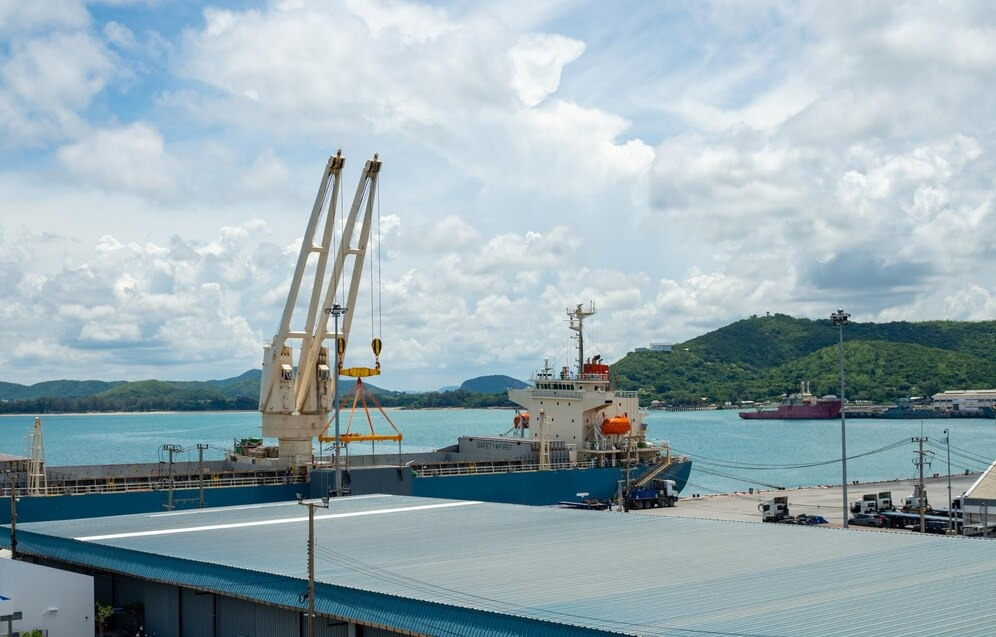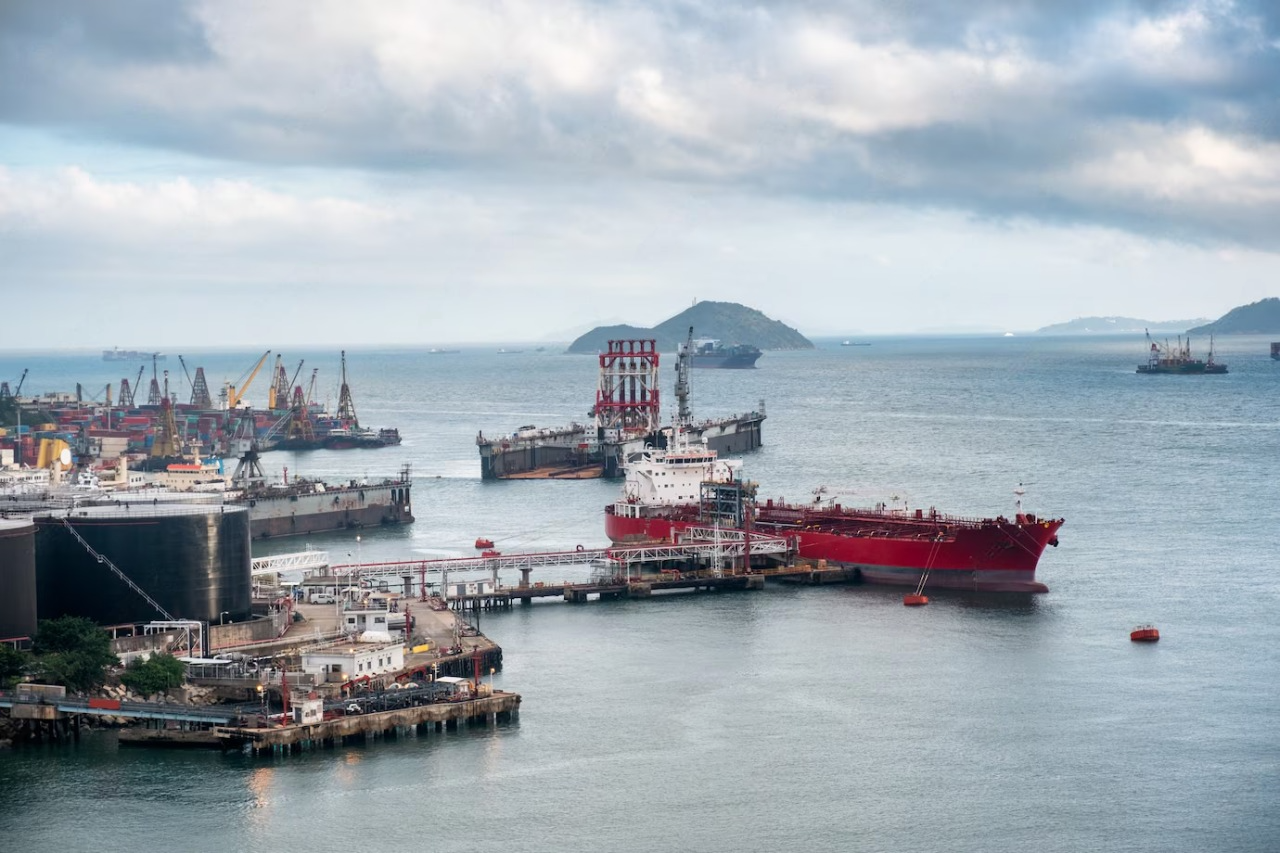Be your Logistics Department in China
Customized logistics solutions, your logistics expert in China
Customized logistics solutions, Shipping from China to the World
Tel:+8613424475220 Email:info@viputrans.com 
China's top sea ports are crucial for the country's import and export activities. These ports, including Shanghai, Ningbo-Zhoushan, Shenzhen, Guangzhou, Qingdao, and Tianjin, play a significant role in the global economy as they handle a large portion of China's trade. They are vital hubs for international trade, connecting China to the rest of the world and sustaining its position as a global economic superpower. In this blog post, we will explore the history, location, capacity, and significance of these top sea ports in China.

Shanghai Port
The Shanghai Port is a major port located at the mouth of the Yangtze River, covering approximately 3,619 square kilometers. Operated by the Shanghai International Port Group (SIPG), it boasts an impressive 125 berths with a combined berth length of 18 kilometers. Handling over 2,000 ship containers per month, the port accounts for a significant quarter of China’s total foreign trade. In 2024, the Shanghai Port achieved an outstanding output of around 47 million Twenty-Foot Equivalent Units (TEUs), showcasing its efficiency in container productivity.
Monthly throughput record: 4.20M TEU
Total annual container throughput: 43.5M TEU
Vessels in port: 2290
Annual cargo tonnage: 514 million
Number of employees: 13,546
Top exports: Cars, integrated circuits, computers, telephones
Top imports: Processors and controllers, iron ore concentrate, gold, medium-sized cars
Top trading partners: United States, Japan, Hong Kong, Taiwan, United Kingdom, Germany
Ningbo-Zhoushan Port
Ningbo-Zhoushan Port is a significant hub for vessel docking, with a total of 309 productive berths, including 60 deep-water berths capable of handling 10,000 or more Tons of Weight. The port also features a crude oil terminal with a capacity of 250,000 dead tons and a crude loading and unloading station with a capacity of 200,000 dead weight. In addition, the port has seen impressive container freight activity, with an average daily container transport exceeding 97,000 containers in the most recent tally. This represents a remarkable increase of 108.5% compared to the same period in the previous year, highlighting the port’s growing significance in containerized trade.
Monthly throughput record: 3.50M TEU
Total annual container throughput: 30.2M TEU
Vessels in port: 1800
Annual cargo tonnage: 1.17 billion
Number of employees: 8,000
Top exports: Textiles, electronics, machinery
Top imports: Crude oil, iron ore, grain
Top trading partners: Japan, South Korea, United States, Australia, Brazil
Shenzhen Port
Shenzhen Port in China is a major player in the global shipping industry, ranking third among the largest container ports worldwide. It uses the standard unit of measurement called TEU to gauge cargo capacity on vessels and determine container types for calculating port activity. The port is located in the southern part of China’s Guangdong Province and spans approximately 260 kilometers along the scenic Shenzhen coast. With an annual transshipment capacity of around 194.9 million tons, Shenzhen Port is home to approximately 40 shipping companies that collectively offer access to a vast network of international container lines. This makes it a crucial gateway and corridor for global trade, with around 130 international container shipping routes established within the port.
Monthly throughput record: 2.80M TEU
Total annual container throughput: 28.8M TEU
Vessels in port: 1500
Annual cargo tonnage: 260 million
Number of employees: 9,500
Top exports: Electronics, machinery, textiles
Top imports: Machinery, electronics, plastics
Top trading partners: United States, Hong Kong, Japan, South Korea, Germany
Guangzhou Port
Additionally, Guangzhou Port is well-equipped to handle the growing demand for container shipping, with advanced facilities for container handling and storage. The port has established strategic partnerships with major shipping lines, ensuring efficient and reliable services for both importers and exporters. Furthermore, Guangzhou Port is continuously investing in technological advancements and infrastructure development to enhance its operational efficiency and capacity. This commitment to innovation and expansion has solidified Guangzhou Port's position as a key player in the global maritime industry. In conclusion, Guangzhou Port is a vital hub for international trade and commerce, with its strategic location, modern facilities, and comprehensive services making it an integral part of the global supply chain.
Monthly throughput record: 1.50M TEU
Total annual container throughput: 20.0M TEU
Vessels in port: 1200
Annual cargo tonnage: 600 million
Number of employees: 7,000
Top exports: Automobiles, electronics, machinery
Top imports: Crude oil, iron ore, coal
Top trading partners: United States, South Korea, Japan, Australia, Germany
Qingdao Port
Qingdao port is equipped with modern facilities and efficient logistics systems, allowing for smooth and timely cargo handling. It is also well-connected to major transportation networks, including rail and road systems, further enhancing its capabilities as a key hub for international trade. In addition to its role in cargo handling, Qingdao Port also serves as a vital center for cruise and passenger transportation, further adding to its overall importance in the maritime industry. Overall, Qingdao Port’s status as one of the world's busiest ports underscores its significance in facilitating global trade and commerce, making it a pivotal player in the global shipping industry.
Monthly throughput record: 1.80M TEU
Total annual container throughput: 21.0M TEU
Vessels in port: 1100
Annual cargo tonnage: 500 million
Number of employees: 5,500
Top exports: Machinery, chemicals, textiles
Top imports: Crude oil, iron ore, natural gas
Top trading partners: South Korea, Japan, United States, Germany, Australia
Tianjin Port
Tianjin Port is a major port in northern China, spanning over 120 square kilometers with 151 production berths and approximately 31.9 kilometers of pier beaches. It is located about 160 kilometers southeast of Beijing and serves as the primary maritime gateway to the capital city. The port has a robust network of trade relations, connecting with around 500 ports in over 180 countries and regions worldwide, facilitating a significant volume of international trade with more than 500 scheduled vessels linking the port to major international ports on a monthly basis. Tianjin Port handles a diverse range of cargo, including agricultural products, automobiles, and crude oil. It has also seen substantial growth in natural gas imports, highlighting its growing role in facilitating energy imports.
Monthly throughput record: 1.20M TEU
Total annual container throughput: 18.5M TEU
Vessels in port: 1000
Annual cargo tonnage: 460 million
Number of employees: 6,200
Top exports: Automobiles, electronics, chemicals
Top imports: Crude oil, iron ore, machinery
Top trading partners: Japan, South Korea, United States, Germany, India

China's major sea ports are essential to the nation's logistics network, supporting its trade and economic development. The Shanghai Port is the busiest, handling a record monthly throughput of 4.20 million TEU and an annual container throughput of 43.5 million TEU. It primarily exports cars and integrated circuits to the United States, Japan, and Europe. Following closely is the Ningbo-Zhoushan Port, which handles significant cargo tonnage and serves as a key hub for crude oil and iron ore imports, especially from Japan and South Korea.
Shenzhen Port is a key player in the electronics and machinery exports, with a heavy focus on trading with the United States and Hong Kong. Guangzhou Port is known for its automobile exports and imports a substantial amount of crude oil and coal, mainly partnering with South Korea and Japan. Qingdao Port has a strong presence in machinery and chemical exports and imports significant amounts of crude oil and natural gas, collaborating closely with South Korea and Germany. Lastly, Tianjin Port is a significant export hub for automobiles and electronics, relying on crude oil and machinery imports and primarily trading with Japan and India.
These ports work together to enable the transportation of large amounts of goods and also strengthen China's role as a global trade leader, promoting international economic connections and reinforcing the nation's industrial strength.
Copyright © 2003-2025 VIPU Supply Chain Logistics Co., Ltd. | All Rights Reserved
LOGISTICS | E-COMMERCIAL FULFILLMENT | ABOUT US | CASE | NEWS | VIDEO | CONTACT US
We will find the fastest or the cheapest way for your shipment. Please specify: where from, where to, what to ship.